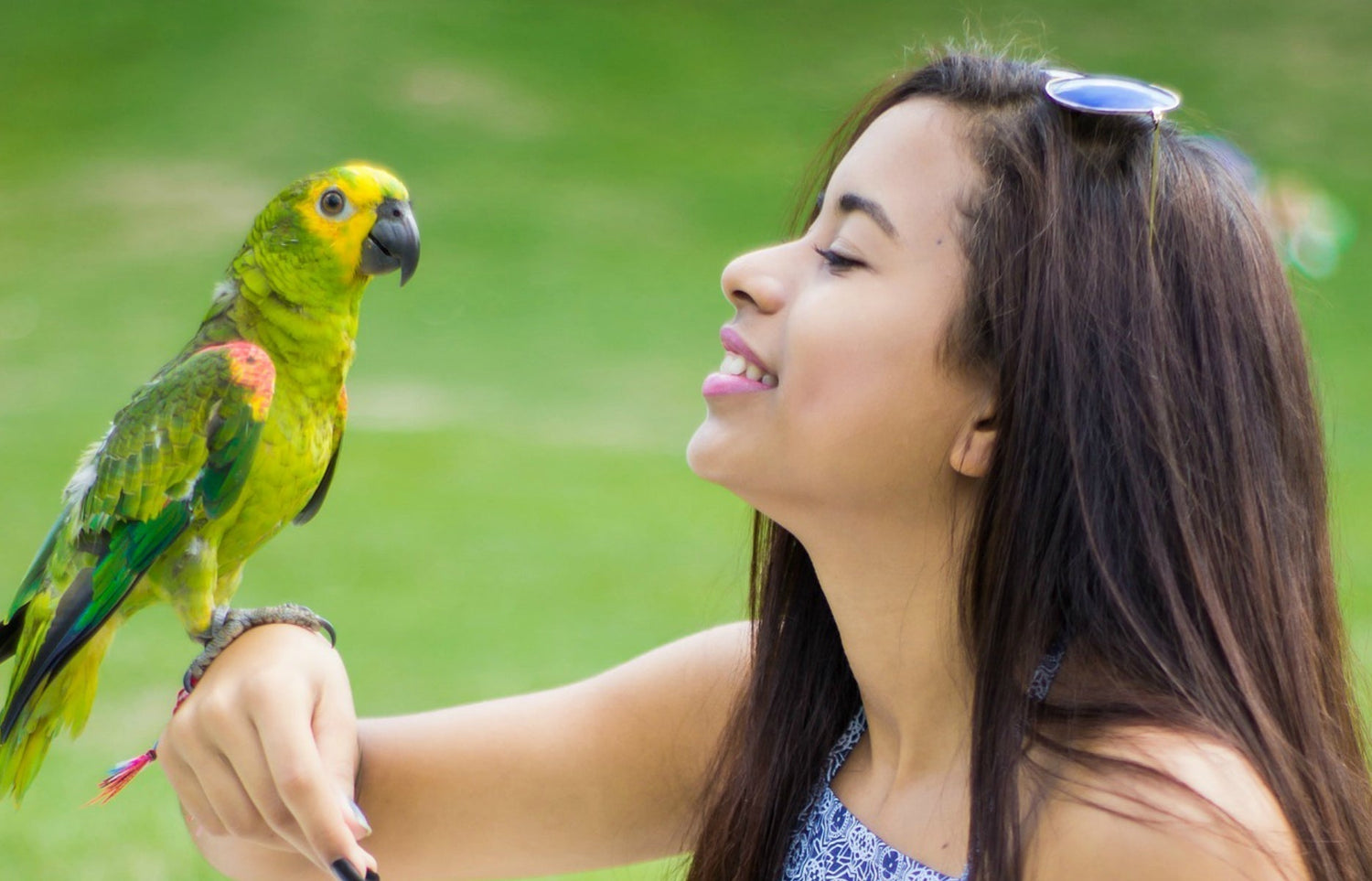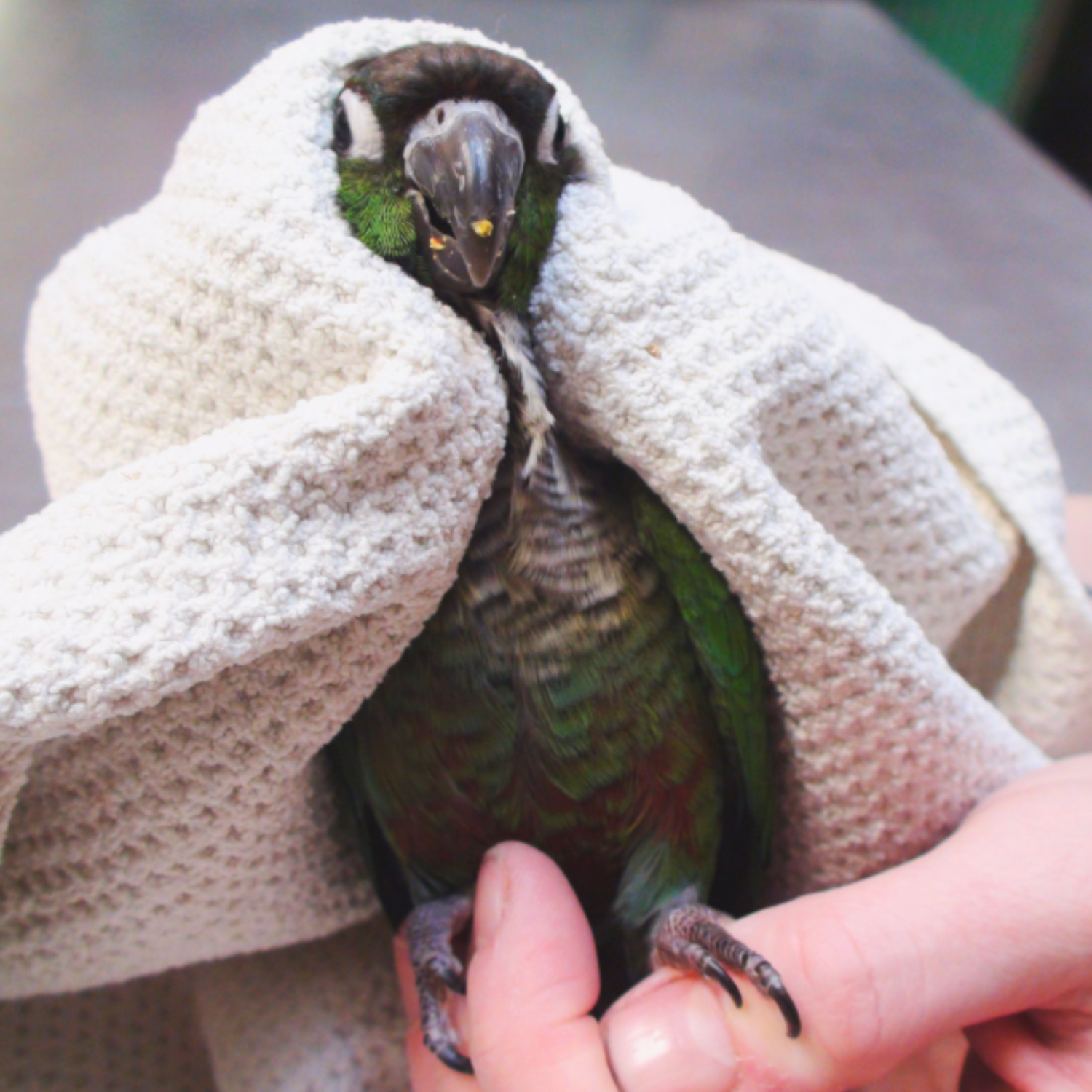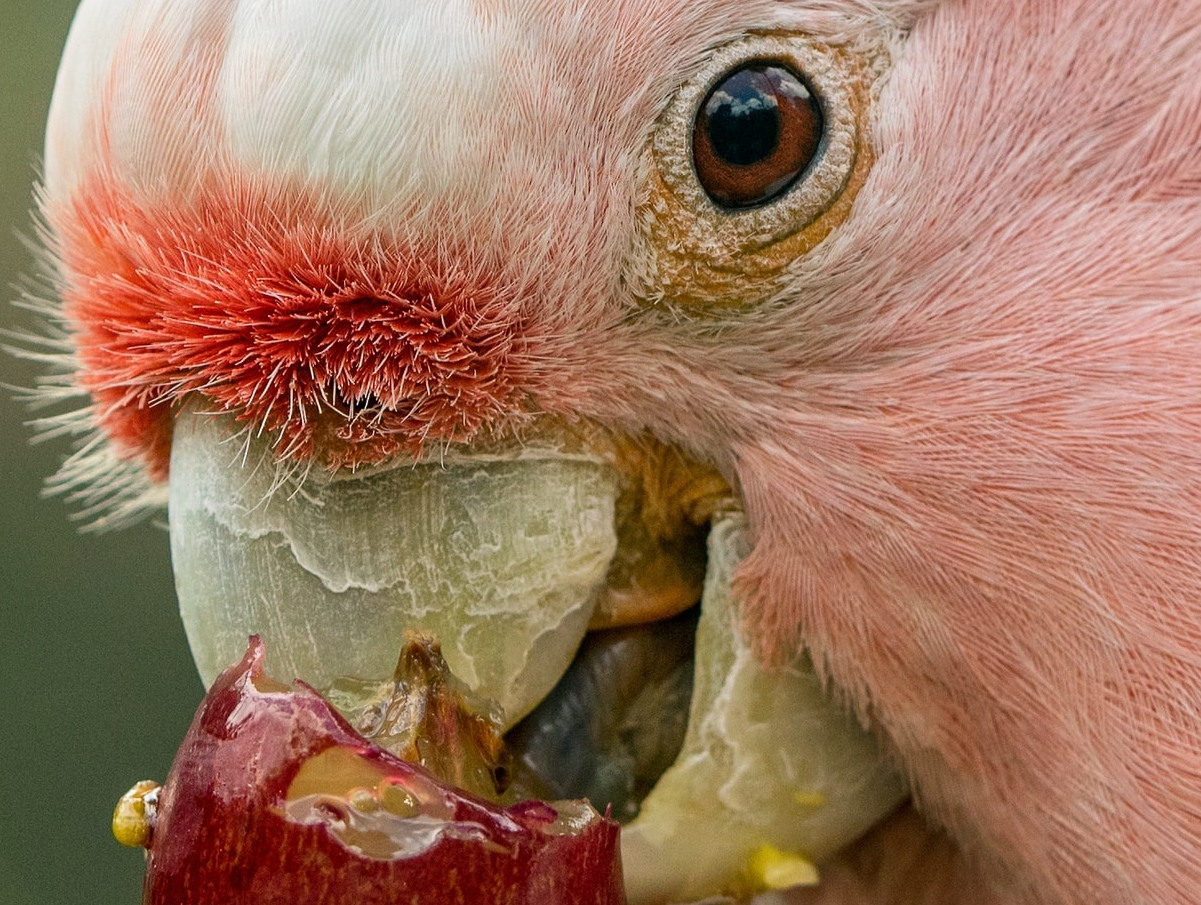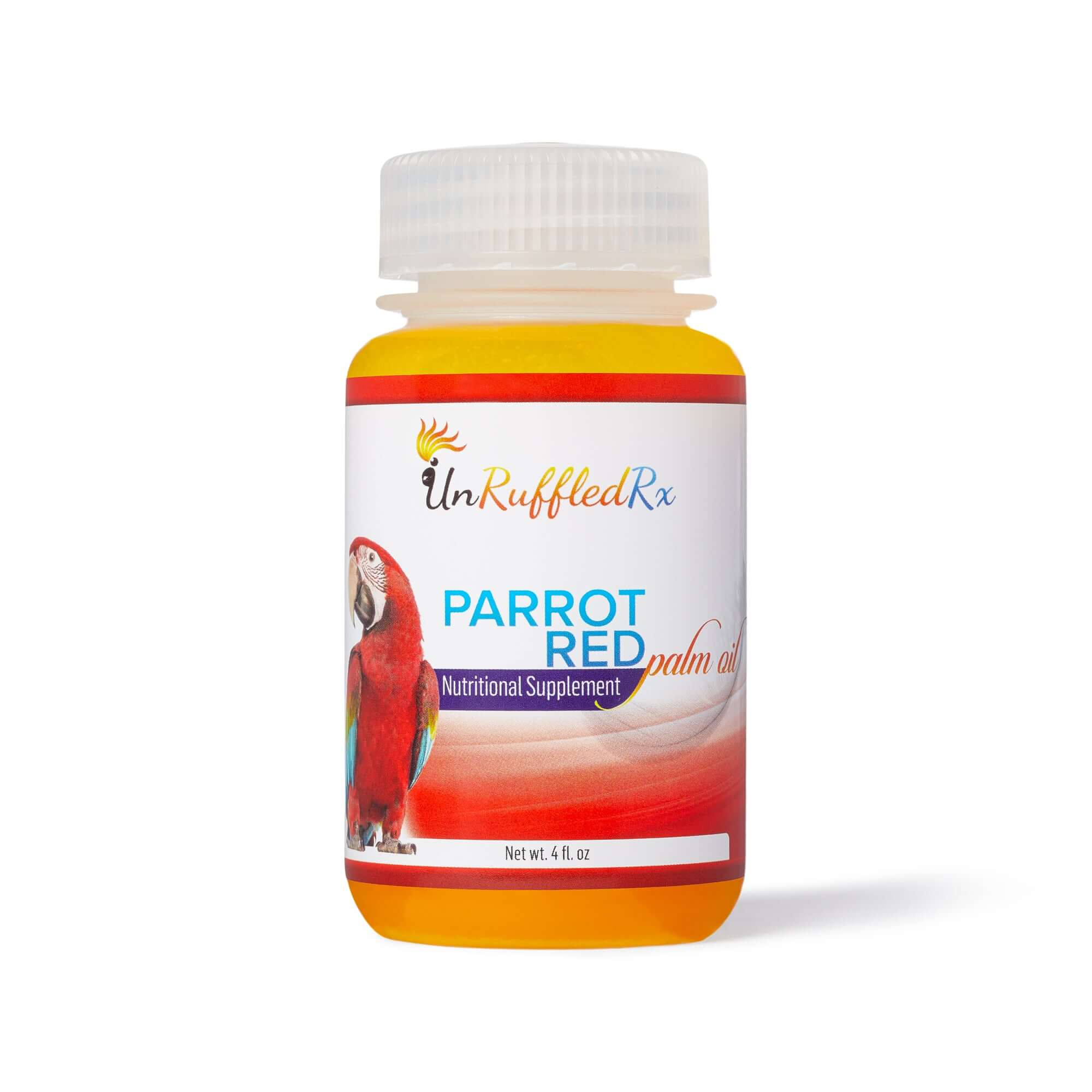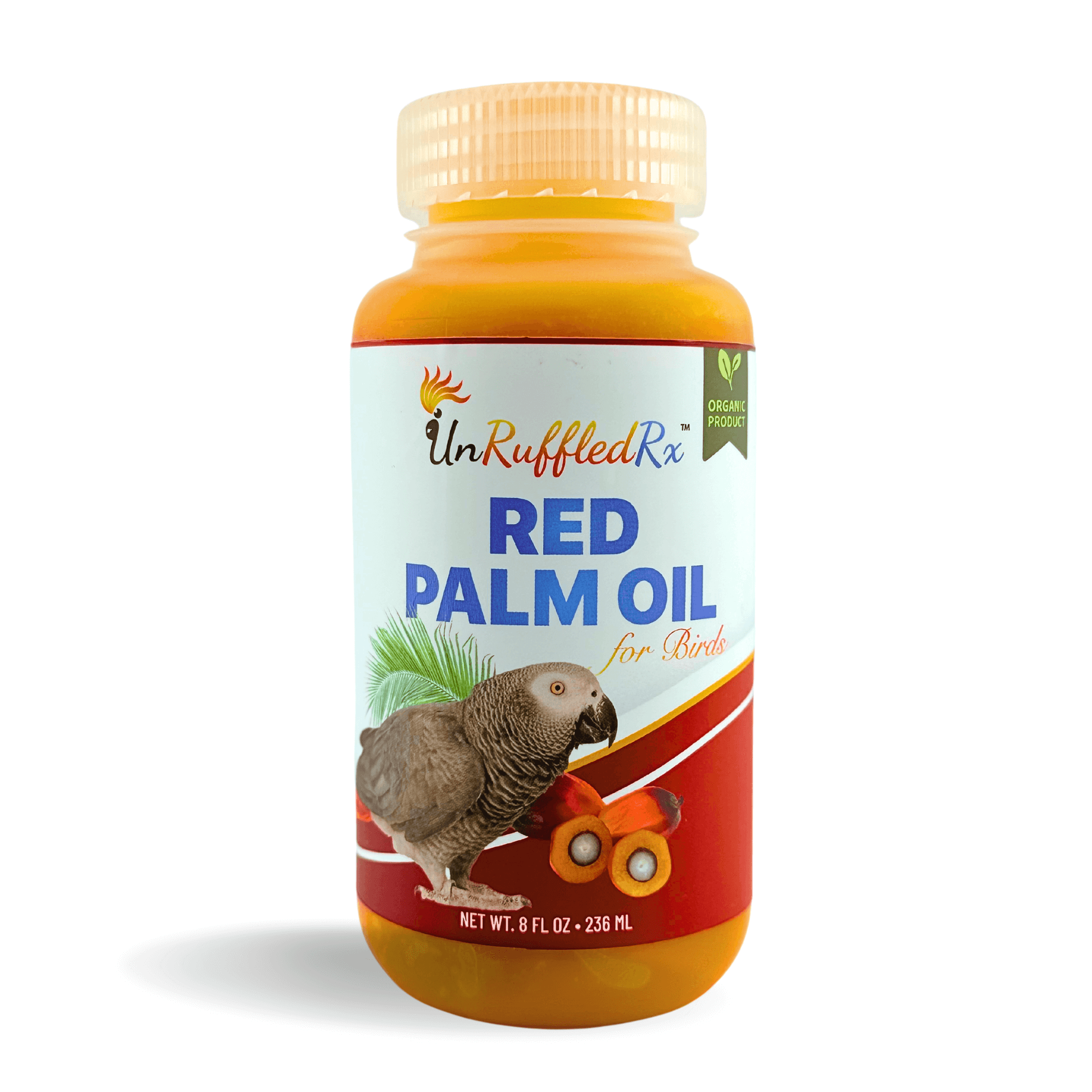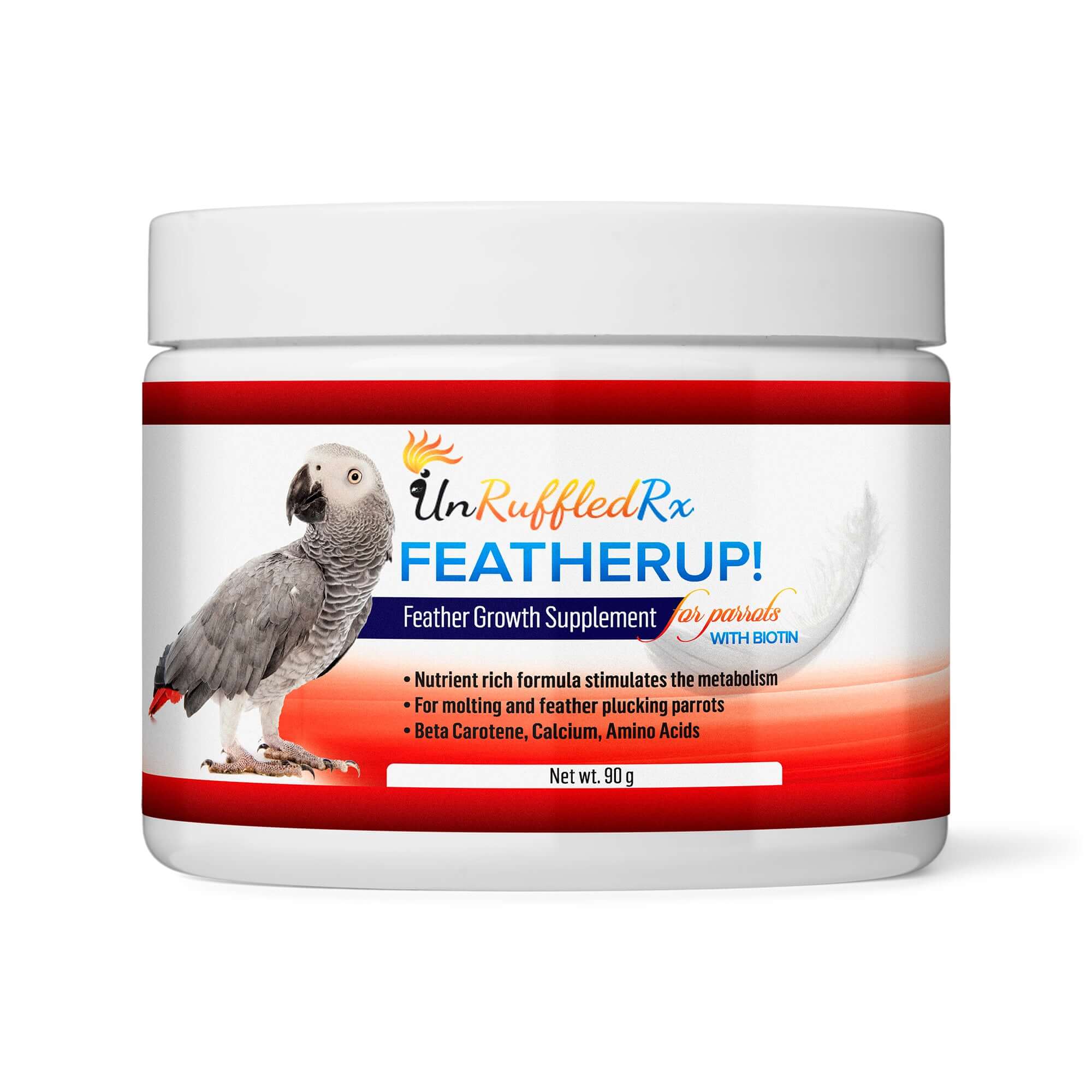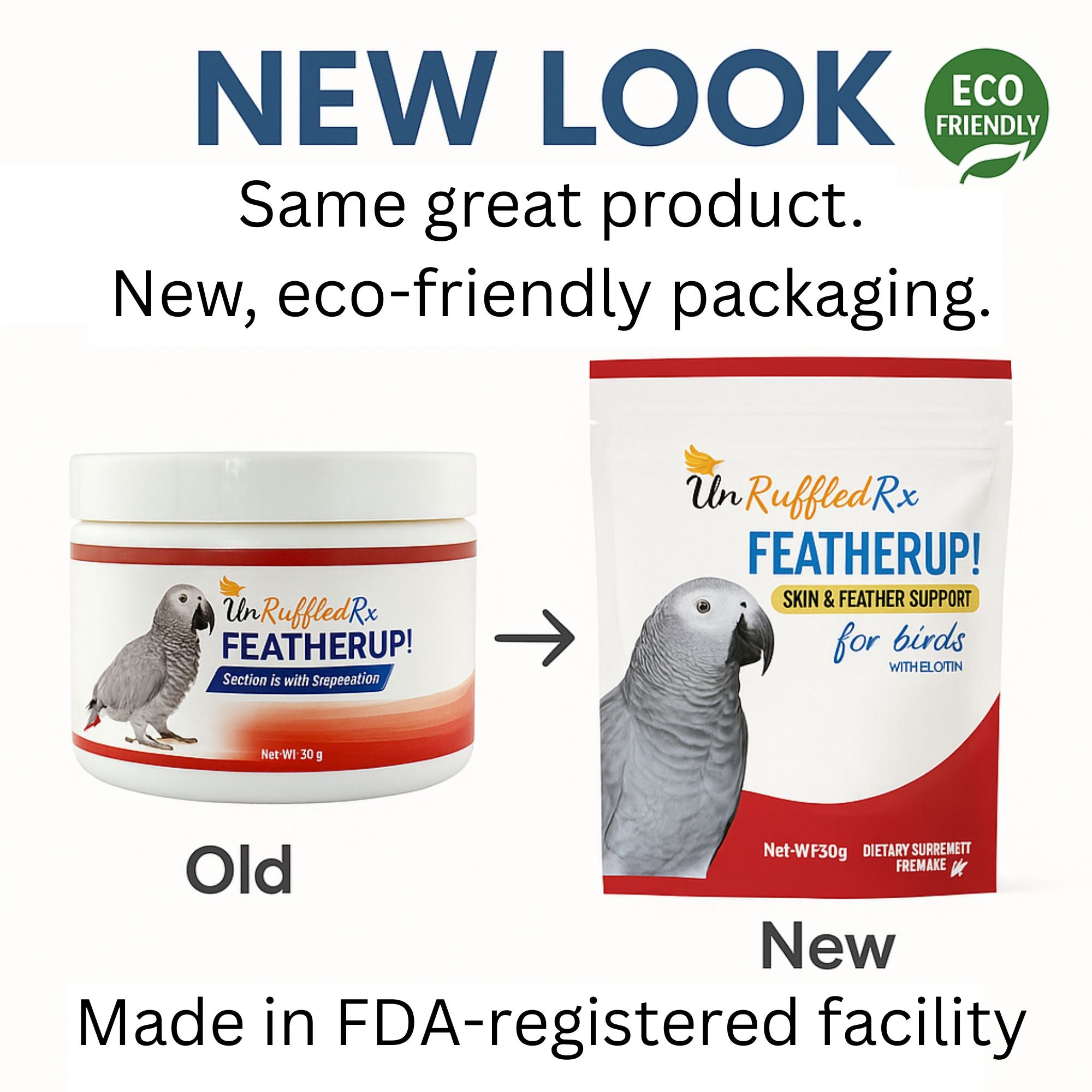- Why Birds Struggle in the Summer Heat
- What Temperature Is Too Hot for Pet Birds?
- Signs Your Parrot Is Too Hot
- How to Keep Your Bird Cool in Summer
- Keeping Birds Safe During a Heat Wave
- Can Birds Die from Heatstroke?
- 5 Easy Ways to Prevent Bird Dehydration
- Sunshine Is Important—But Do It Safely
- Bonus Tip: What to Do If the Power Goes Out in the Summer Heat
Sunlight can lift your bird’s mood and boost their health—but when summer heat kicks in, things can go downhill fast. This guide breaks down how to keep your bird cool when temperatures rise, how to spot signs of heat stress, and simple ways to prevent dehydration.
Whether you’re dealing with a mild heatwave or triple-digit temps, here’s what you need to know about the benefits of sunlight for birds this summer.
Why Birds Struggle in the Summer Heat
Can Birds Overheat Like Humans?
Absolutely. Birds can overheat—and it can happen fast. They may not sweat like we do, but their tiny bodies heat up quickly when temps soar, especially if there's no airflow or shade.
In the wild, parrots escape heat by flying to higher branches, catching breezes, or resting in the shade. But our homes? Not always so forgiving.
How Birds Regulate Temperature
Birds rely on panting, fluffing, wing-spreading, and perching in cooler spots to regulate their body temperature. They don’t sweat, and they can't tell us when they’re overheating—so it’s on us to read the signs.
Think of your bird like a feathered thermostat. If the room heats up, they’ll try to cool off by holding their wings away from their body, breathing faster, or heading to the lowest perch. If you see those signals, it’s time to intervene.

The Hidden Dangers of Modern Homes
Glass windows, sun-facing cages, poor air circulation, and artificial lighting can all make things worse during a heatwave. Even a room with AC can get dangerously hot near a window or skylight.
And here’s something many bird parents miss: low humidity and stagnant air can dry out your bird’s skin and make it harder for them to cool down. So just because your thermostat says 75°F doesn’t mean your bird’s not struggling.
Luckily, there are easy steps you can take to keep your bird cool, comfortable, and thriving all summer long. Let’s dive in!
What Temperature Is Too Hot for Pet Birds?
Ideal Indoor Temps for Most Parrots
Most parrots feel their best in temps between 50°F and 80°F. That’s the sweet spot where their body can regulate heat naturally without working overtime.
If your home is comfy for you in shorts and a T-shirt, it’s probably just fine for your bird too. But once things creep above 80°F, especially with no breeze or humidity, your bird’s at risk for heat stress.
Danger Zones: What’s Too Hot?
Once temps climb past 85°F indoors, it can start to take a toll—especially if your bird is older, overweight, or already dealing with health issues.
And here’s the kicker: if the cage is in direct sun, the temp inside that cage can hit 90°F or more, even if the rest of the room feels okay. That's why birds in sunny windows or stuffy rooms are at higher risk during a summer heat wave.
Humidity and Airflow
Humidity matters—a lot. Birds come from tropical regions where the air is moist and moving. When indoor air is hot and dry, it can dehydrate their skin, damage feather quality, and make it harder to cool down.
Running AC or a fan? Great! Just don’t point it directly at your bird. Instead, let the air circulate through the room to create a gentle breeze. Bonus points if you use a hygrometer to keep humidity around 40–60%—that’s the parrot-friendly range.
So while temperature is important, it’s the combo of heat, airflow, and humidity that really affects how your bird feels. The goal: steady temps, gentle air movement, and enough moisture to keep those feathers looking fabulous.
Signs Your Parrot Is Too Hot
7 Common Signs of Overheating
Birds can’t say, “I’m hot!”—but their body language will tell you everything if you know what to look for. Here are some common signs your parrot may be overheating:
🟠 Panting or open-mouth breathing
🟠 Holding wings away from their body (aka “wing drooping”)
🟠 Restlessness or pacing
🟠 Less vocal or more irritable than usual
🟠 Fluffed-up feathers in a warm room
🟠 Head bobbing or rapid breathing
🟠 Refusing food or water
If you spot more than one of these at a time, it’s a good clue your bird needs a break from the heat—fast.
What Parrot Poop Tells You
Yes, we’re going there—because poop is a great clue when it comes to heat stress. When birds get too warm or dehydrated, their droppings can get watery or sparse.
Notice dry, dark poop or a major change in the rates (that white part)? It may mean your bird’s not drinking enough—or is already overheating. Time to check that water bowl, mist them down, or move them somewhere cooler with better circulation (but no drafts, please).
Emergency Red Flags
If your bird is weak, unresponsive, or showing signs of disorientation, that’s a full-on emergency. Other red flags include:
🔴 Sudden collapse or loss of balanceU
🔴 Seizure-like shaking
🔴 Eyes half-closed or non-reactive
These symptoms mean your bird may be in the danger zone for heatstroke. Move them to a cooler spot, mist them with lukewarm water, and call your avian vet immediately.
Remember—early signs are subtle, so the more tuned in you are, the easier it is to step in before things go south. Let’s keep those feathers cool and those poops healthy!
How to Keep Your Bird Cool in Summer
What Temperatures Do Parrots Actually Thrive In?
Most parrots we share our homes with come from warm, tropical or subtropical regions—places where the temperature usually ranges from about 70 to 90 degrees, with high humidity almost year-round. That said, 90 to 95 degrees is really the upper limit, not their comfort zone.
Over time, our companion parrots have adapted to typical indoor temps, but they’re still wired for warmth and moisture. Yes, they can handle cooler or hotter days from time to time, but that doesn’t mean they feel great in them.
Bottom line? They’ll do best when we give them an environment that mirrors what nature intended—steady warmth, some humidity, and good airflow.
Keeping Indoor Time Safe
Even indoors, summer heat can sneak up on your bird—especially in rooms with poor airflow, direct sun, or closed-up windows. Here’s how to keep things safe:
- Place cages out of direct sunlight —watch skylights and south-facing windows
- Use oscillating fans or low AC to maintain a steady, comfortable room temp
- Keep humidity between 40–60% to support skin and sinus health
- Offer misting or aloe spray daily to cool skin and add moisture
Hot Tip: Use a small thermometer and hygrometer near the cage to monitor real conditions—not just the thermostat reading across the house.
Misting, Bathing, and Aloe Sprays
Water is your bird’s best friend - especially on hot days. A gentle misting with room-temp water or an aloe vera bird spray can bring quick relief.
Some birds love splashing in a shallow dish, while others prefer a light mist —or even a shower perch visit. Always dry your bird off in a calm, draft-free space to avoid stress or chills.
Cooling with Fans (the Right Way)
Fans can be a lifesaver during the summer—but only if they're used safely. One of the most heartbreaking accidents avian vets see way too often is a bird flying into a ceiling fan. It happens in seconds and it’s almost always preventable. If your bird is flighted, always turn off ceiling fans before letting them out for playtime.
And while we’re on the topic—keep an eye on electric cords too. Birds love to chew, and power cords are way too tempting. One good bite could lead to burns or worse.
Stick to a setup that’s safe and predictable. Use an oscillating fan placed across the room—not blowing directly on your bird—and make sure the cords are tucked out of reach. That way, everyone stays cool and out of harm’s way.
Keeping Outdoor Time Safe
Sunshine and fresh air are great for birds—but outdoor time comes with serious risks if it’s too hot or not properly supervised. If you take your bird outside in a carrier, harness, or aviary setup, follow these rules:
- Stick to early morning or late afternoon to avoid peak heat
- Always offer shade, water, and a gentle breeze
- Limit sun exposure to 10–20 minutes, especially for lighter-colored birds
- Never leave your bird alone outside—even in a secure cage
Safety Note: Metal parts of carriers or cages can heat up fast in the sun—double check surfaces before letting your bird near them.Here’s your engaging story block in the requested style—formatted in HTML with your brand colors and a warm, relatable tone:
☀️ My Birds Choose Their Sunshine
At my house, sunshine time isn’t just a routine—it’s a conversation.
I’ve got a spacious outdoor aviary tucked under a pergola where my birds can catch some rays, soak up the breeze, and retreat to shade whenever they want. I even have mister hooked up to the hose to use on hotter days. It’s their little summer lounge, and I love watching them explore it on their own terms.
And yes, I actually ask them, “Do you want to go outside?” as I offer an arm step-up. Or, "Do you want to go inside now?" That way, they have a choice and I know when they are getting too hot.
If I see droopy wings or signs they’re getting too warm, we head right back in. I check in often—because every bird is different, and their comfort comes first.
Macaws and Greys might stretch out for more sun, while budgies and cockatiels tend to prefer the dappled kind. That’s the beauty of giving them options—they’ll show you what feels good if you’re paying attention.
Let your bird take the lead, and sunshine becomes a shared experience—not a guessing game.
Shaded Retreats and Frozen Treats
Give your bird the option to self-regulate by creating a shaded spot inside the outdoor cage. A light cotton cover over one side works well.
And, for a little cooling fun? Offer chilled fruit or a DIY Frozen Foraging Wreath. Blueberries, chopped cucumbers, or a frozen mash cube can help hydrate and cool from the inside out.

Hot Tip: Rotate fresh foods frequently in hot weather—warm chop spoils quickly and can attract bacteria or fruit flies within just a couple of hours.
Whether your bird stays inside with AC or joins you outdoors in the shade, the key is awareness. Watch the heat, provide hydration, and make simple adjustments to help your bird stay cool, safe, and happy all summer long.
Keeping Birds Safe During a Heat Wave
Emergency Cooling Tips
When the temps spike unexpectedly—or the power goes out—you’ll need to act fast. Start by moving your bird to the coolest room in the house, preferably one with shade and cross-ventilation.
Next, gently mist them with water or apply an aloe Vera Bird Spray to help reduce surface body temp. Leave bowls of cool water nearby and offer chilled fruit or veggies to boost hydration. No fridge? A damp towel draped over part of the cage (but not covering it completely) can help lower the temp a few degrees.
Portable Cooling Kits
A simple emergency kit can be a lifesaver—literally. Here’s what to keep on hand:
🧊 Battery-operated or rechargeable fan
🧊 Mist bottle or aloe spray
🧊 Small ice packs or gel packs (wrapped in cloth, not touching the bird)
🧊 Cooling towel or cotton sheets 🧊 Backup water bottle & shallow dish 🧊 Your vet’s emergency number
Keep it all in a labeled tote so you’re not scrambling when things heat up.
Daily Heat-Check Routine
In summer, don’t wait for things to get bad—build heat checks into your daily routine, especially if the air conditioning goes out. Every morning, ask yourself:
✅ Is the cage in shade or partial light?
✅ Is fresh water available (and not warm to the touch)?
✅ Does the room have airflow—fan, AC, or open window?
✅ Are there signs of panting, droopy wings, or less energy?
If something’s off, take action early. A 5-minute check can prevent a full-blown emergency and keep your bird safe when the weather gets wild.
Can Birds Die from Heatstroke?
What Happens in Heatstroke
Yes—birds can die from heatstroke, and it can happen much faster than most people realize. If your bird is stuck in a hot, stuffy environment with no airflow or hydration, they can slip into a medical emergency in as little as 15–30 minutes.
During heatstroke, your bird’s body temperature rises out of control. Their organs begin to shut down, they can lose consciousness, and their respiratory system may fail. It’s silent, fast, and absolutely life-threatening.
First Aid Steps

If you suspect heatstroke, act fast:
🆘 Move your bird to a cooler, shaded space immediately
🆘 Lightly mist them with room-temp water or aloe vera spray—don’t use cold water or ice
🆘 Offer cool, clean water to drink
🆘 Use a fan to circulate air, but avoid direct blasts
The goal is to lower body temp gradually—not shock the system. Sudden cold exposure can make things worse.
When to Call the Vet
If your bird is unresponsive, weak, trembling, or having trouble breathing—call your avian vet right away. This is a true emergency. Don’t wait it out. Birds hide illness by nature, so if they're visibly in distress, it’s already serious.
Let the vet know you're dealing with possible heatstroke and describe your bird’s symptoms clearly. They may guide you through additional steps while you're en route or preparing to bring your bird in.
Bottom line? Prevention is key. But if heatstroke happens, quick action can save your bird’s life.
5 Easy Ways to Prevent Bird Dehydration
Keep Water Fresh and Cool
Birds are picky drinkers. If their water looks dirty, feels warm, or smells off, they’ll avoid it—especially in summer heat. Pro Tip: Make sure that you always change the water a minimum of twice a day in warmer months.
Clean the water bowl daily and refill it with cool, clean water. If your bird’s cage gets direct sun, consider moving the water dish to a shaded corner so it stays cooler throughout the day. You can even toss in a small ice cube or two (just make sure your bird is okay with it).
Add Moisture-Rich Foods
Fruits and veggies aren’t just great for nutrition—they’re a sneaky way to boost hydration too.
Offer bird-safe options like cucumbers, watermelon (seedless), bell peppers, or steamed zucchini. Even sprouted seeds hold more water than dry food and can be a refreshing part of a summer meal plan.
Daily Misting or Aloe Spray
Misting does more than cool your bird down—it also hydrates the skin and feathers. Try a light mist in the morning when temps are rising, or after playtime when your bird is active and warm.
An aloe vera spray made for birds adds bonus skin support and helps keep the feather follicle area soothed and hydrated. Just avoid overdoing it—aim for a light mist, not a soaking.
These simple habits help keep your bird cool from the inside out—and make a big difference during long stretches of summer heat.
Sunshine Is Important—But Do It Safely
Why Birds Need Natural Sunlight
Just like us, birds need sunlight for good health. Sunlight helps their bodies produce vitamin D3, which is essential for calcium absorption, strong bones, and healthy immunity.
And just like us, birds can also develop cataracts, skin damage, or even cancer from too much unfiltered UV. That’s why the goal is smart sun time—not endless exposure.
Safe Ways to Offer Sun Time
The best sunlight is natural and offered in short, supervised bursts. You can use an aviary or even take your feathered friend for a walk in a Pak O Bird Carrier. Using bird lights in moderation (15-30 minutes per day) can also supply important UVA and UVB lighting.
How much sun your bird needs depends a bit on species. Birds from tropical or equatorial regions—like macaws, Amazons, and African greys—generally benefit from a little more direct exposure, while smaller birds or those from shaded forests (like cockatiels or budgies) may do better with less frequent, softer light.
Avoiding Overexposure
More sun isn’t always better. Too much direct UV, especially during peak heat hours (10 a.m.–3 p.m.), can lead to overheating or skin damage—especially for birds with light-colored or bare patches.
Always provide shade, plenty of water, and never leave your bird unattended outside. Watch for early signs of stress like panting or wing drooping, and bring them back inside if they seem uncomfortable.
Bottom line? Sunlight is powerful. Used wisely, it supports everything from bone health to mood—but like with all things bird care, balance is key.
🔌 Bonus Tip: What to Do If the Power Goes Out in the Summer Heat
If the power goes out during a heatwave, things can get dangerous for your bird—fast. Once indoor temps hit 85°F or higher, you need to take action.
Birds don’t sweat like we do. They rely on airflow and evaporation to cool down. Without electricity, their risk of heatstroke skyrockets.
Watch for early signs of overheating:
- Panting or open-mouth breathing
- Wings held away from the body
- Staring, wide eyes
- Fast breathing or sluggishness
Emergency backup plan:
- Move your bird to the coolest room in the house—ideally a basement or shaded side of the home.
- Set out bowls of cool water around and inside the cage to boost humidity and provide hydration.
- Mist your bird lightly with room-temperature water to reduce body temperature.
- Hang a damp towel over part of the cage (never the whole cage) to help cool the air.
- Use a battery-powered fan or gently fan the room manually. Keep airflow steady but not direct.
Check on your bird every 10–15 minutes. Heatstroke can sneak up quickly, so stay alert and responsive.
🚗 If Things Get Too Hot—Don’t Hesitate to Evacuate
If the room is heating up and your bird shows signs of stress, don’t try to tough it out—go. Birds can die from heatstroke in minutes once they pass their tolerance point.
Place your bird in a secure travel carrier and take a vehicle with working A/C. Use the Nextdoor app or local outage maps to find out where power is still active.
Good temporary spots include your avian vet’s office, an emergency vet clinic, or even a pet-friendly friend’s home with working air conditioning.
Bottom line: Don’t wait for things to get critical. Have a plan, act early, and keep your bird cool, safe, and supported until power is restored.
In conclusion...
Knowing your bird needs fresh water, cooling support, and healthy nutrients is one thing—actually making the switch and seeing results? That’s where the magic happens.
Don’t worry, I’ve got your back. I’ve helped thousands of bird lovers just like you support their parrots through summer heat, feather struggles, and stress—without the guesswork.
My line of UnRuffledRx bird wellness products and Avian Naturals Chop Toppers are vet-trusted and crafted to keep your bird healthy from the inside out. They’re easy to use, bird-safe, and designed with real behavior and health science behind them. Because your bird’s comfort shouldn’t be complicated—and their well-being is my mission.
Related Posts:
Can birds die from the heat? 8 Summer survival tips
Birds in the heat. Feed this. Not that
3 homemade treats your parrot will love this summer
References:
Brenda. (2019, July 23). How hot can the bird take, what temperature. Lafeber Pet Birds. Retrieved from https://lafeber.com/pet-birds/questions/how-hot-can-the-bird-take-what-temperature/
Doering, L. (2022, July 19). Summer heat & our birds. Lafeber Pet Birds. Retrieved from https://lafeber.com/pet-birds/summer-heat-our-birds
Griffin, C. (2012, August 1). How birds keep their cool. Audubon. Retrieved from https://www.audubon.org/news/how-birds-keep-their-cool
Rowe, M. (n.d.). Feathered sun worshippers: The surprising benefits for birds. Lafeber Pet Birds. Retrieved from https://lafeber.com/pet-birds/feathered-sun-worshippers-the-surprising-benefits-for-bird
Shaw, T. (2021, June 11). How do birds keep cool in the summer? U.S. Fish & Wildlife Service. Retrieved from https://www.fws.gov/story/how-do-birds-keep-cool-summer
World Parrot Trust. (2021). World Parrot Trust impact report 2020/21. Retrieved from https://www.parrots.org/pdfs/our_publications/reports/2021WPTImpactReport.pdf
Link to this blog
Burroughs, D. (2025, June 23). How do I keep my bird cool in the summer (Rev. ed.). BirdSupplies.com. Retrieved from https://birdsupplies.com/blogs/news/157721223-hot-tips-to-keep-your-bird-cool-this-summer?pb=0
Diane Burroughs, LCSW, brings over 30 years of experience helping bird lovers build stronger, healthier bonds with their parrots. With a foundation in psychotherapy and Applied Behavior Analysis (ABA), Diane combines proven behavioral science with simple, real-life strategies anyone can use. Through her books, behavior consultations, and UnRuffledRx parrot wellness products, she’s dedicated to helping real bird owners create trust, confidence, and a lifetime of positive experiences with their feathered companions.
Diane's products have been featured in the Journal of Avian Medicine and Surgery and at ExoticsCon, a national conference for exotic animal veterinarians. Her bird collars and supplements are trusted by avian vets and stocked in vet clinics across the U.S. With thousands of individualized behavior plans under her belt, Diane’s mission is simple: to help parrots and their people thrive together.
TAGS: #BenefitsOfSunlightForBirds #CanBirdsDieFromHeat #BirdCare
SHARING IS CARING! 📣
Love what you read? Help spread the word on Facebook & Instagram 🌟
💬 Leave a comment below and let us know your thoughts!

